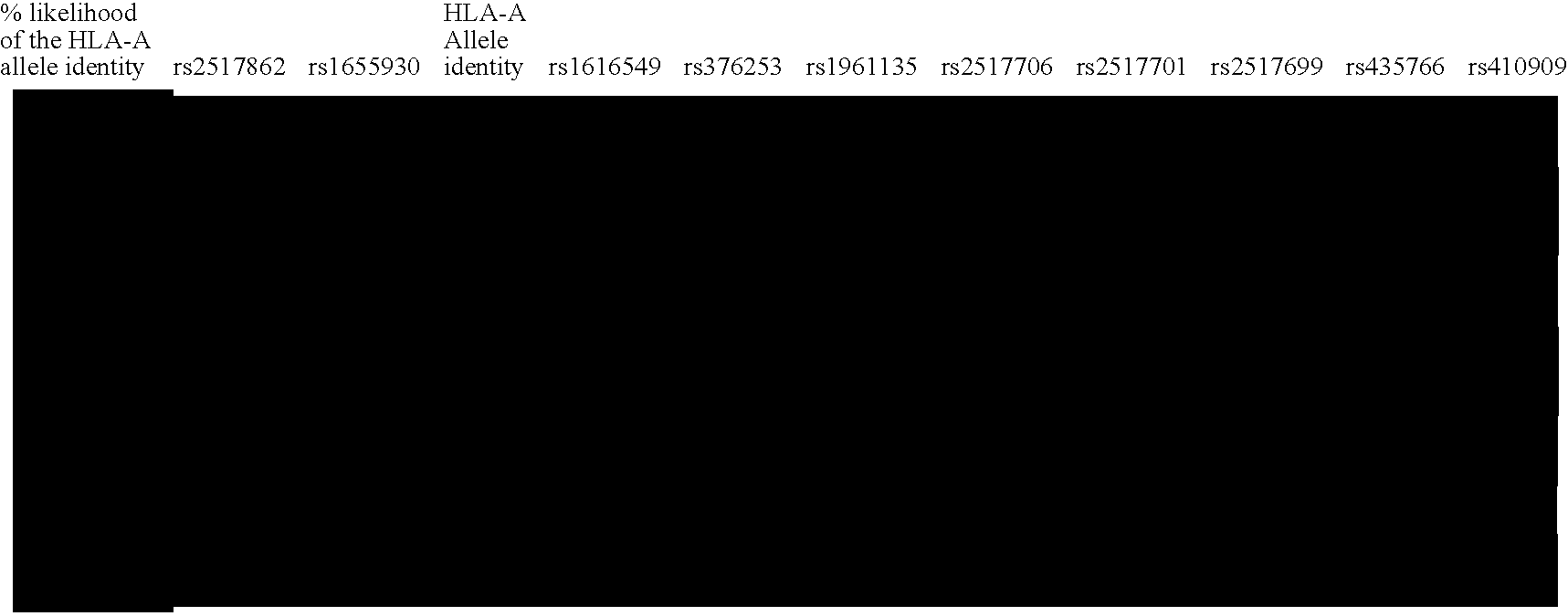Methods of Human Leukocyte Antigen typing by neighboring single nucleotide polymorphism haplotypes
- Summary
- Abstract
- Description
- Claims
- Application Information
AI Technical Summary
Benefits of technology
Problems solved by technology
Method used
Image
Examples
example 1
Materials and Methods
[0066] DNA Samples
[0067] Samples were obtained from the Coriell Cell Repository and drawn from the collection of Utah CEPH pedigrees of European descent. One hundred thirty-six independent, grandparental chromosomes were used for haplotype construction. Of these chromosomes, 96 were in common with Gabriel et al. (2002) and, therefore, were used for comparison with the genome-wide LD structure. Identifiers for all individuals can be found at the Inflammatory Disease Research Group (IDRG) Website.
[0068] Genotyping and Data Checking
[0069] All SNPs for which genotyping was attempted were publicly available at the dbSNP Web site. SNPs were selected mainly to achieve a desired spacing (1 / 20 kb); however, SNPs with more than one submitter were preferentially chosen. SNP primers and probes were designed in multiplex format (average fivefold multiplexing) with SpectroDESIGNER software (Sequenom). A total of 435 assays were designed. Assays were considered successful ...
example 2
Analysis of the MHC Region Based on the Integrated Map
[0086] Structure of LD in the HLA Genes, Compared with the Genome at Large
[0087] Recent studies have shown that LD extends across long segments of the genome (Daly et al. 2001; Dawson et al. 2002; Gabriel et al. 2002; Phillips et al. 2003). Within such segments, a small number of distinct, common patterns of sequence variation (haplotype alleles) are observed in the general population. Between these segments are short intervals where recombination is apparently most active in creating assortments of these patterns (Daly et al. 2001; Jeffreys et al. 2001; Gabriel et al. 2002). Operationally, it is not necessary to test each variant within an LD segment for association with disease phenotype. Rather, a small subset of variants that identifies all common haplotype alleles within a segment can be used.
[0088] In order to compare the LD structure in the MHC with that of the genome as a whole, this MHC data was compared with the data...
PUM
| Property | Measurement | Unit |
|---|---|---|
| Digital information | aaaaa | aaaaa |
Abstract
Description
Claims
Application Information
 Login to View More
Login to View More - R&D
- Intellectual Property
- Life Sciences
- Materials
- Tech Scout
- Unparalleled Data Quality
- Higher Quality Content
- 60% Fewer Hallucinations
Browse by: Latest US Patents, China's latest patents, Technical Efficacy Thesaurus, Application Domain, Technology Topic, Popular Technical Reports.
© 2025 PatSnap. All rights reserved.Legal|Privacy policy|Modern Slavery Act Transparency Statement|Sitemap|About US| Contact US: help@patsnap.com



